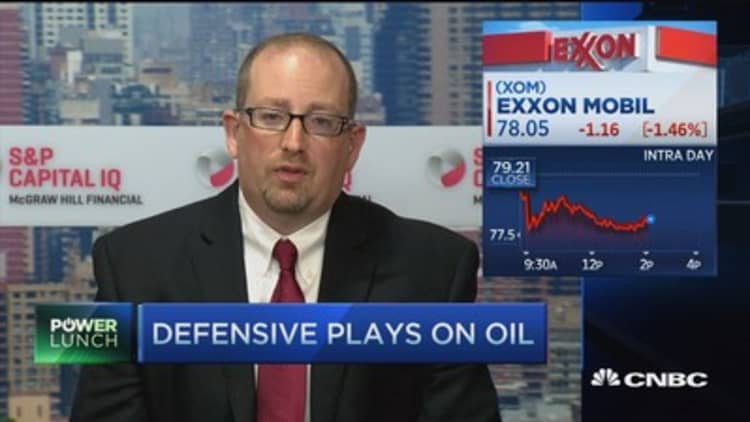
Oil prices have now broken below many Wall Street targets and look set to test the year's lows and beyond, before finding a bottom.
Led by international bench mark Brent crude, futures were slammed Monday on concerns about new supply coming on the market and worries about contracting demand from China.
"The sentiment is bearish. Technicals are bearish. There's a lot of downward momentum," said Michael Wittner, head of commodities research Americas at Societe Generale. "There are a lot of bearish nonfundamentals and fundamentals out there. I've got to think these things are close to being priced in. I know it's ugly out there right now, but I'm not buying that this is a full collapse. ... It looks like the market wants to retest the lows from the first quarter. It could happen. Obviously, we're not that far away from that."

Brent slipped below the psychologically key $50 per barrel level, opening the door for a retest of its 2015 low of $45.19 from January. Brent finished the day at $49.83 per barrel, and is now down 13 percent for the year. Its more than 4.5 percent drop Monday outpaced the 3.6 percent decline in West Texas Intermediate oil futures. WTI fell to $45.17 per barrel, just several dollars above its year low near $42.
Read MoreTempted to buy oil stocks?
"We are of the view we're not really going to be staying down here for a prolonged period of time. We see this still as a seasonal lull in the market." said Sabine Schels, head of fundamental commodities research at Bank of America Merrill Lynch. Schels said her end-of-quarter target is $50 for Brent and $45 for WTI, and the market could undershoot that.
Schels said market positioning will add downside pressure. "We've seen hedge funds reducing their bullish bets on WTI—the lowest in five years. The gross short position is almost back to what we had earlier in the year," she said, adding it would add pressure to the downside for oil prices.
Michael Cohen of Barclays said he has a third-quarter average target of $61 per barrel for Brent and $55 per barrel for WTI.
Read MoreBattered oil giant has difficult future
"The technical indicators are such that we could see a $1 or $2 move lower ... I think it's unlikely you stay at these levels," he said. Lower prices bring more buying, such as China's stocking of its strategic petroleum reserve, he noted.
Oil prices were pressured by comments from Iran's energy minister who said the country could raise output by 500,000 barrels per day as soon as sanctions are lifted and by a million barrels within months. The market was also reacting to high levels of production from OPEC countries. Reuters reported last week that its survey showed the cartel was at the highest monthly production level in history in July.
Analysts were skeptical of the claim by Iran, but OPEC's lack of willingness to set prices has created a new dynamic in the market, said Cohen.
"Whether the Saudis like it or not, they introduced a more volatile market environment rather than a price target," he said. Increases in production by Saudi Arabia and Iraq have added to a global oversupply of 1.5 million to 2 million barrels a day.
"We see no real upside for the next couple of weeks, until the end of September. And then going into the fourth quarter, we'll see a lot more demand coming back into the market,:Schels said,
She said Iraq and Saudi Arabia are factors. "Both of them are producing record highs and there doesn't seem to be any let up. Rigs in Saudi Arabia are at a record high," Schels said. "We see continued increases out of Saudi really for market share gains and in Iraq, there's more infrastructure that's coming on line that had previously discontinued production," she said. Between them, another 500,000 barrels a day could be added next year.
There are also factors that could start to be positives for oil, including the first big monthly drop in crude output from U.S. shale producers in May, she said.
Schels said the shale producers will also have to pass muster as borrowers when lenders perform a borrowing base re-determination this fall. "We do know the regulators applied a lot more scrutiny on oil and gas lending," she said. Schels said she does expect to see cutbacks in funding for some companies in the oil patch, and therefore crude output could drop, a positive for prices.
"We do think the market is underestimating how much shale production will come off on the back of all these facts. We actually have a decline in shale production for all of next year," she said.
The U.S. industry produced 9.4 million barrels a day of oil in the week ended July 24, well off the July high of 9.6 million barrels.


